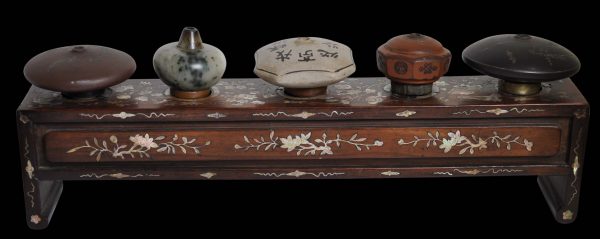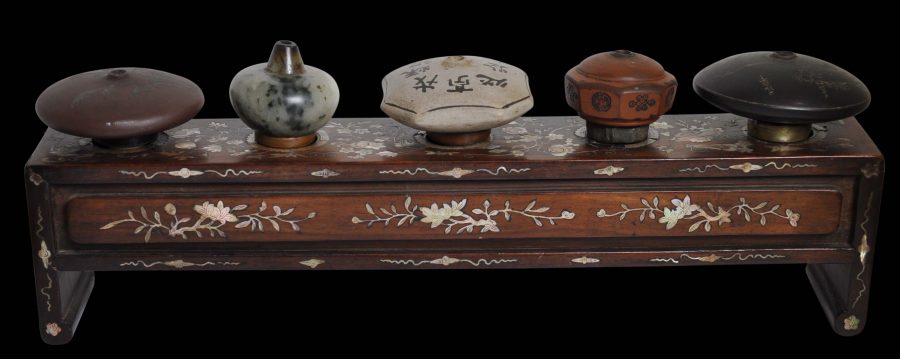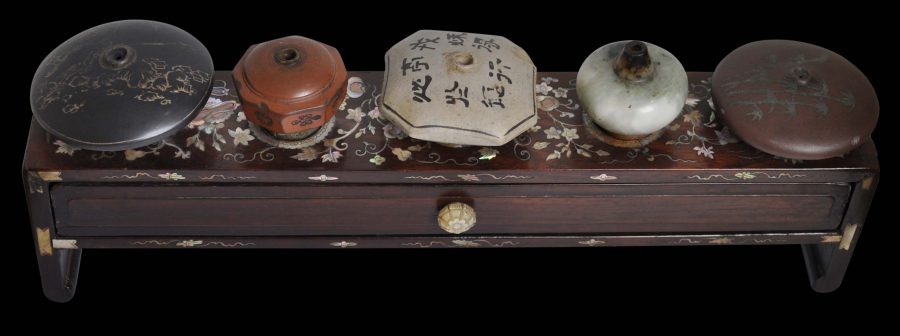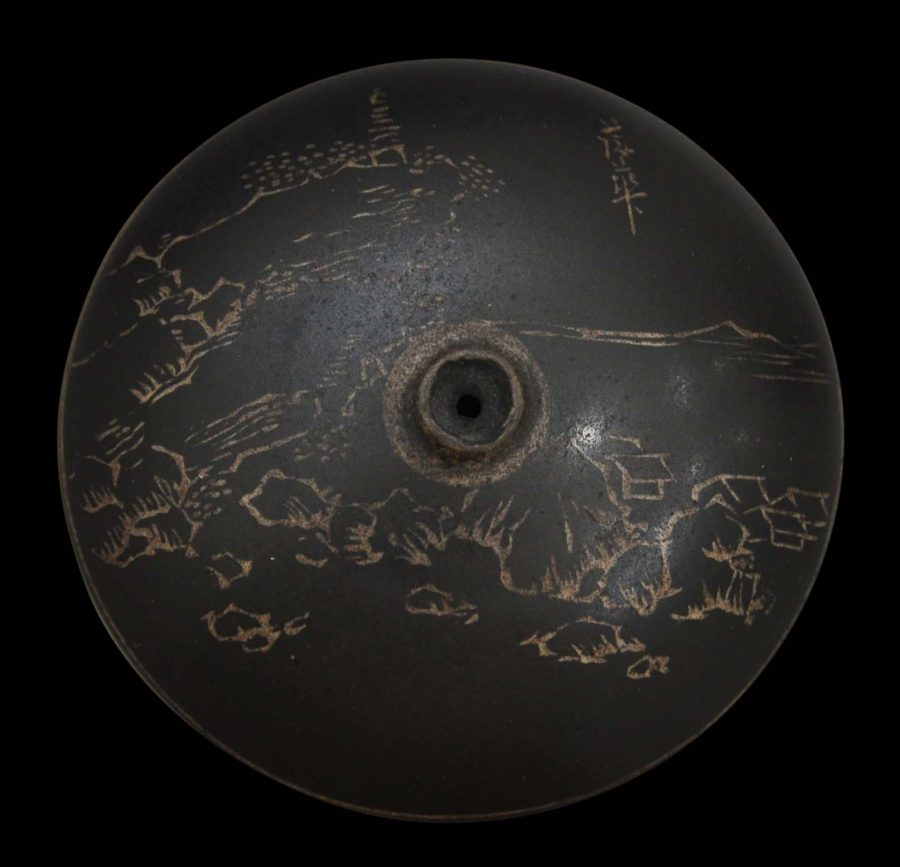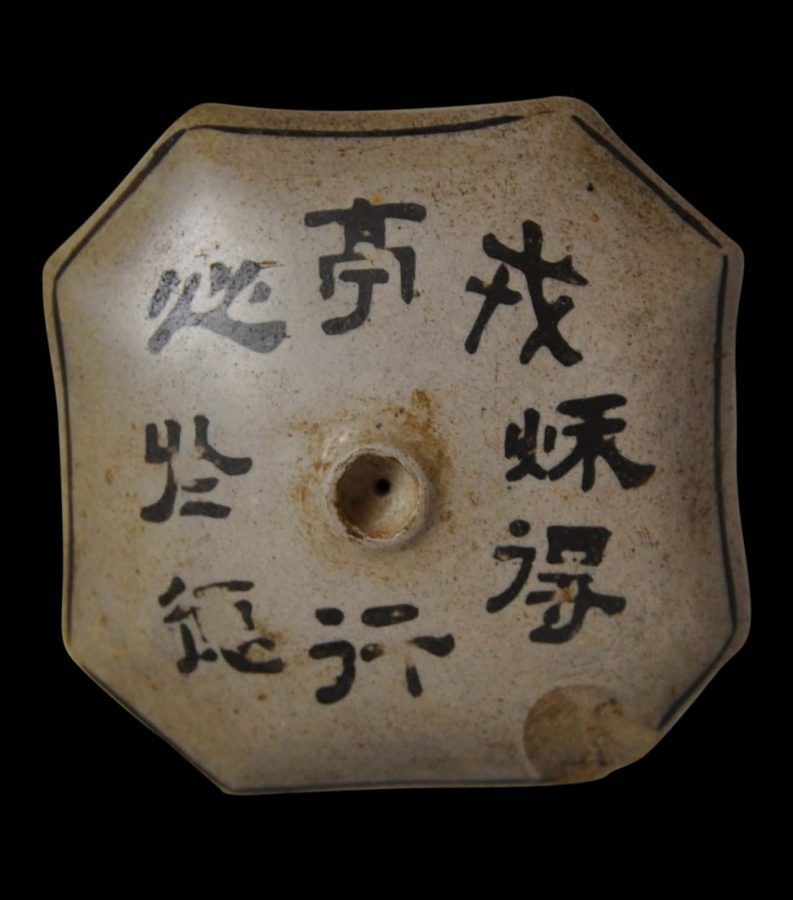Opium usage was associated among wealthier users with elegant accouterments. The pipe was accompanied by a detachable pipe head and a user might have multiple heads, each a miniature work of art. And with multiple heads came the need for presentation stands, such as the example here.
This one with space or sockets for five pipe heads is made of rosewood beautifully and finely inlaid with mother-of-pearl in designs showing vines fruiting with gourds, plus blossoms and vases of flowers.
The back of the stand has a dross drawer into which the ash and residue inside the pipe heads could drip when not being used.
The stand is accompanied by five fine pipe heads. One is unusual and of mottled, green translucent stone of translucent stone. The others are either stoneware or ceramic, and in the characteristic ‘door-knob’ shape with a tiny aperture to the top over which the opium ball was heated. One is decorated with stands of bamboo, another with a village and mountain scene and another with a poem.
Four of the five have a maker’s or retailer’s mark on the underside.
Most opium pipes and equipment available today are reproduction pieces – it is rare now for genuine examples to appear on the market.
One pipe head has a chip to a corner; the rest are without chips. The stand has some losses to the mother-of-pearl inlay. But overall, the condition of the set is fine and consistent with age and use.
References
Bertholet, F.M., Opium: Art et Histoire d’un Rituel Perdu, Fonds Mercator, 2007.
Delalande, D. & E., Memoires d’Opiums/Memories of Opium, Somogy editions, 2011.
Lee, P., Opium Culture: The Art & Ritual of the Chinese Tradition, Park Street Press, 2006.
Martin, S., The Art of Opium Antiques, Silkworm Books, 2007.


